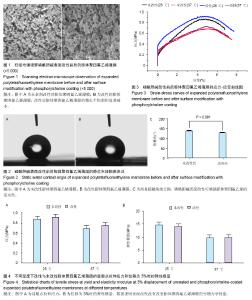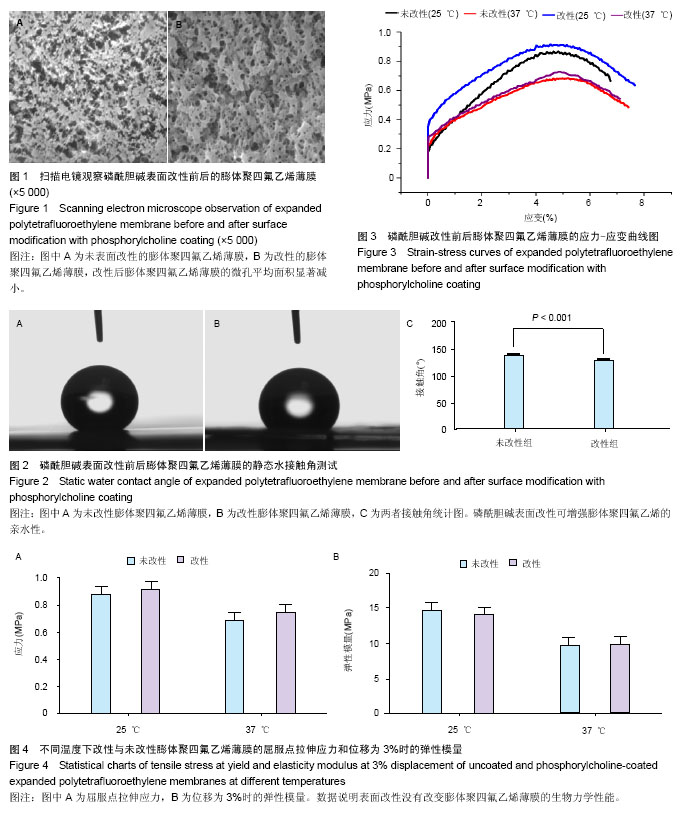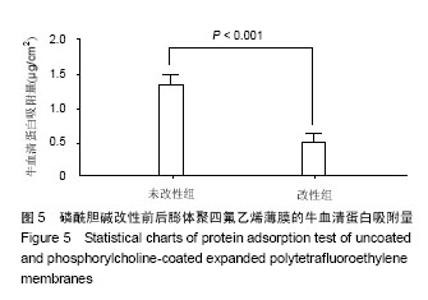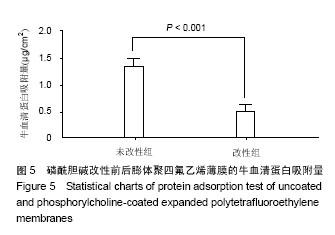| [1] 张本,徐志云.高分子材料人工心脏瓣膜:下一代人工心脏瓣膜[J].中华胸心血管外科杂志,2013,29(1):53-58.
[2] Ghanbari H,Viatge H,Kidane AG,et al.Polymeric heart valves: new materials, emerging hopes.Trends Biotechnol. 2009; 27(6): 359-367.
[3] Ando M,Takahashi Y.Ten-year experience with handmade trileaflet polytetrafluoroethylene valved conduit used for pulmonary reconstruction.J Thorac Cardiovasc Surg. 2009; 137(1):124-131.
[4] Lee C,Lee CH,Kwak JG,et al.Bicuspid pulmonary valve implantation using polytetrafluoroethylene membrane: early results and assessment of the valve function by magnetic resonance imaging.Eur J Cardiothorac Surg. 2012;43(3): 468-472.
[5] Quintessenza JA,Jacobs JP,Chai PJ,et al. Polytetrafluoroethylene bicuspid pulmonary valve implantation: experience with 126 patients.World J Pediatr Congenit Heart Surg.2010;1(1):20-27.
[6] Ito T,Maekawa A,Yamana K,et al.Use of an expanded polytetrafluoroethylene patch as an artificial leaflet in mitral valve plasty: an early experience.Ann Thorac Surg. 2010; 89(5):1620-1624.
[7] Nistal F,Garcia-Martinez V,Arbe E,et al.In vivo experimental assessment of polytetrafluoroethylene trileaflet heart valve prosthesis.J Thorac Cardiovasc Surg. 1990;99(6): 1074- 1081.
[8] Chen C,Ofenloch JC,Yianni YP,et al.Phosphorylcholine coating of ePTFE reduces platelet deposition and neointimal hyperplasia in arteriovenous grafts.J Surg Res. 1998;77(2): 119-125.
[9] Chevallier P,Janvier R,Mantovani D,et al.In vitro biological performances of phosphorylcholine-grafted ePTFE prostheses through RFGD plasma techniques.Macromol Biosci.2005;5(9):829-839.
[10] Duraiswamy N,Choksi TD,Pinchuk L,et al.A phospholipid- modified polystyrene-polyisobutylene- polystyrene (SIBS) triblock polymer for enhanced hemocompatibility and potential use in artificial heart valves.J Biomater Appl. 2009;23(4): 367-379.
[11] Campbell EJ,O'byrne V,Stratford PW,et al.Biocompatible surfaces using methacryloylphosphorylcholine laurylmethacrylate copolymer.ASAIO J. 1994;40(3): M853-857.
[12] 王俊华,辛忠,李琳.MPC/MMA共聚物的合成及其血液相容性[J].华东理工大学学报:自然科学版,2010,36(4):506-510.
[13] Van Der Heiden AP,Willems GM,Lindhout T,et al.Adsorption of proteins onto poly(ether urethane) with a phosphorylcholine moiety and influence of preadsorbed phospholipid.J Biomed Mater Res.1998;40(2):195-203.
[14] Hayward JA,Chapman D.Biomembrane surfaces as models for polymer design: the potential for haemocompatibility. Biomaterials.1984;5(3):135-142.
[15] Morimoto N,Iwasaki Y,Nakabayashi N,et al.Physical properties and blood compatibility of surface-modified segmented polyurethane by semi-interpenetrating polymer networks with a phospholipid polymer. Biomaterials. 2002; 23(24):4881-4887.
[16] 夏成勇,刘长建,杨能华.磷酰胆碱接枝Dacron人工血管移植后血管表面的生物相容性[J].中国组织工程研究与临床康复, 2010, 14(38):7055-7059.
[17] Ishihara K,Nomura H,Mihara T,et al.Why do phospholipid polymers reduce protein adsorption?J Biomed Mater Res. 1998;39(2):323-330.
[18] Braunwald NS,Morrow AG.A Late Evaluation of Flexible Teflon Prostheses Utilized for Total Aortic Valve Replacement. Postoperative Clinical, Hemodynamic, and Pathological Assessments.J Thorac Cardiovasc Surg. 1965; 49:485-496.
[19] Nosal M,Poruban R,Valentik P,et al.Initial experience with polytetrafluoroethylene leaflet extensions for aortic valve repair.Eur J Cardiothorac Surg.2012;41(6):1255-1257; discussion 1258.
[20] Kidane AG,Burriesci G,Edirisinghe M,et al.A novel nanocomposite polymer for development of synthetic heart valve leaflets.ActaBiomater.2009;5(7):2409-2417. |





